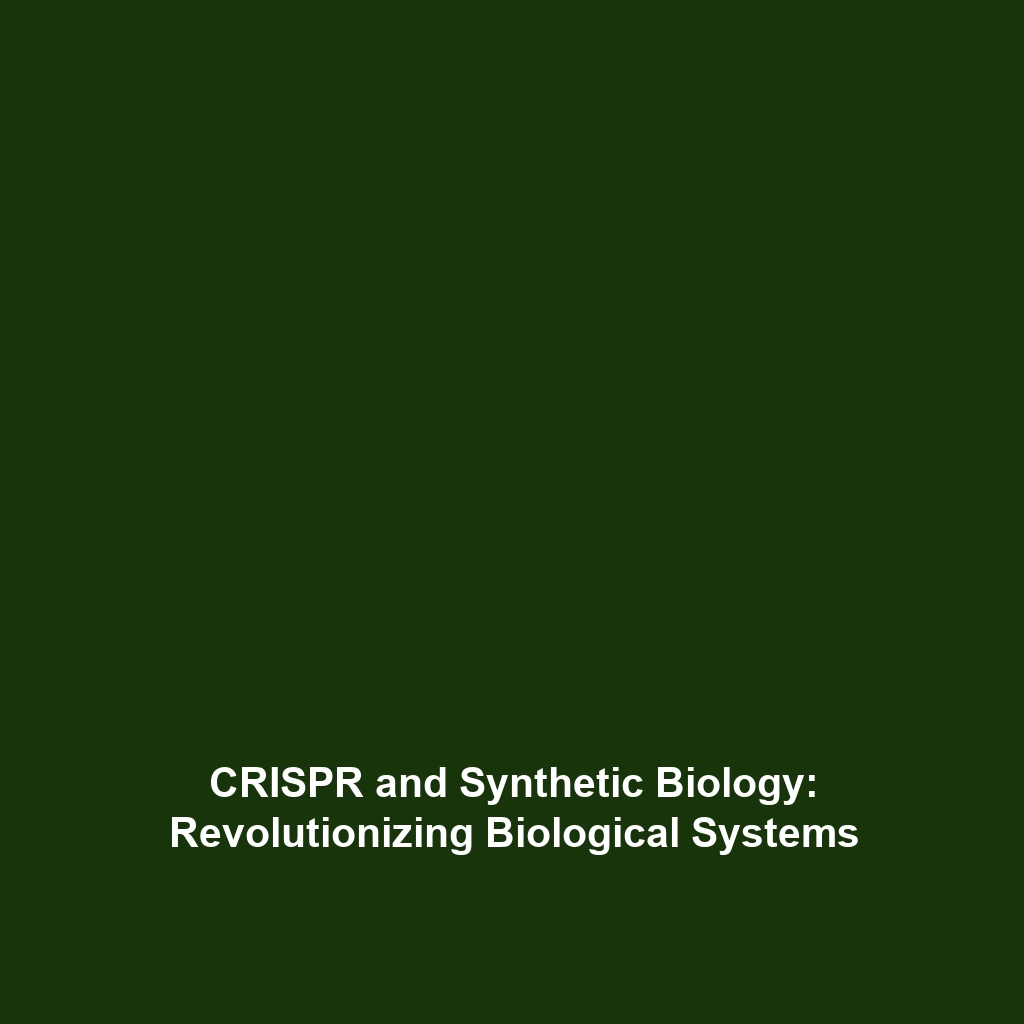The Development of Prime Editing as an Alternative to Traditional CRISPR Methods
Introduction
In recent years, the field of CRISPR gene editing has undergone significant transformation, with the advent of prime editing offering a novel and elegant solution to the limitations of traditional CRISPR techniques. Prime editing, often referred to as “search and replace” for DNA, holds the promise of precise genetic modifications without inducing double-strand breaks, making it a safer option in therapeutic applications. This article delves into the importance of prime editing in the broader context of CRISPR gene editing, highlighting its potential to revolutionize genetic research and therapeutic strategies.
Key Concepts
To understand the significance of prime editing as an alternative to traditional CRISPR methods, it’s essential to grasp some core concepts:
- Mechanism of Prime Editing: Unlike traditional CRISPR, which creates double-strand breaks, prime editing utilizes a catalytically impaired Cas9 protein and a reverse transcriptase to directly rewrite DNA sequences.
- Precision and Versatility: Prime editing allows for precise nucleotide substitutions, insertions, and deletions with minimal off-target effects, enhancing the accuracy of genetic modifications.
- Applications in Disease Modeling: Prime editing holds substantial promise for generating accurate models of genetic diseases, facilitating better research and therapeutic targeting.
Applications and Real-World Uses
The practical implications of prime editing in CRISPR gene editing are profound across various fields:
- Gene Therapy: Prime editing can potentially correct genetic mutations responsible for diseases such as sickle cell anemia and cystic fibrosis.
- Agricultural Innovations: In agriculture, prime editing enables the development of crops with enhanced traits, such as disease resistance and improved yield.
- Functional Genomics: Researchers utilize prime editing to elucidate gene function, offering insights into complex biological processes and disease mechanisms.
Current Challenges
Despite its promise, there are several challenges associated with the development of prime editing:
- The potential for off-target effects, although reduced compared to traditional CRISPR.
- Technical difficulties in delivering the editing machinery effectively into target cells.
- Regulatory and ethical concerns regarding gene editing, particularly in human germline engineering.
Future Research and Innovations
As research into prime editing continues, several exciting innovations are on the horizon:
- Improved Delivery Mechanisms: Developing novel vectors to enhance the precision and accessibility of prime editing tools.
- Next-Generation Tools: Advancements in Cas9 variants and other editing enzymes may increase efficiency and reduce off-target effects.
- Therapeutic Applications: Ongoing clinical trials are expected to clarify the safety and efficacy of prime editing in treating genetic disorders.
Conclusion
The development of prime editing marks a significant breakthrough as an alternative to traditional CRISPR methods, offering enhanced precision and versatility in genetic modification. By circumventing some of the limitations associated with earlier techniques, prime editing is positioned to play a crucial role in the future of CRISPR gene editing. To learn more about the evolving landscape of gene editing, explore our related articles on CRISPR technologies and their applications.



